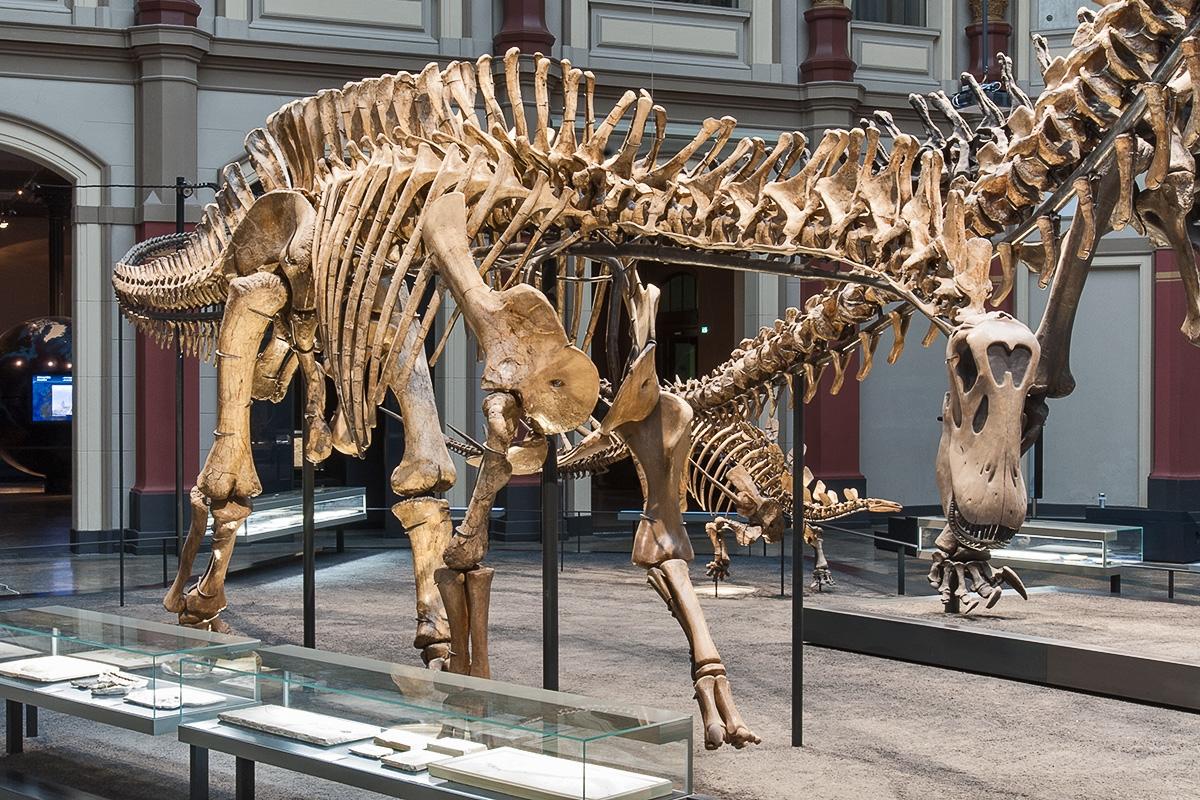For about 70 years, the dicraeosaur fossils from Tendaguru in present-day Tanzania were the only ones known to science. More recently, palaeontologists discovered more fossils in North and South America, Africa and Asia. Amy Campbell of the Museum für Naturkunde Berlin is investigating whether the family tree of these dinosaurs needs to be re-sorted. One of the goals of her Ph. D. project at the Museum für Naturkunde Berlin is a full redescription of the dicraeosaurid material from Tendaguru.
Taxonomy revisited
To date, two species of Dicraeosaurus have been identified: Dicraeosaurus hansemanni and Dicraeosaurus sattleri. The descriptions of these species largely rely on the two partial skeletons “m” and “M” discovered in Tendaguru and the scientific knowledge of the 1930s. The “m” fossils are the best-preserved and most complete dicraeosaurid material.
The material is on display in the Museum as a mounted skeleton of D. hansemanni. Material of D. sattleri, the well-preserved bones of skeleton “M”, is less complete, smaller in size, and stems from younger, upper layers. This led researchers to ascribe the fossils to two separate species.
However, based on the more recent finds of other dicraeosaurids, modern knowledge about sauropod anatomy and a comparison of all available sauropod material from Tendaguru, Campbell revises the species and genus diagnoses in accordance with the rules in the International Code of Zoological Nomenclature. She wants to clarify whether the separation into two species is actually justified by morphology.
Campbell also scans fossil material to reconstruct the “m” skull, neck and shoulder girdle with muscles in 3D, using special software. She will also collect available data and scan specimens of closely related sauropods from
other museums to compare the anatomies and to fill in gaps. The refined computer model can then be used to investigate the biomechanics of the shoulder-neck-system. Testing the range of possible movements, Campbell can draw conclusions about the feeding behaviour and ecology of Dicraeosaurus.
Project-title
Commitment to the morphological extreme – Revised systematics of the sauropod dinosaur Dicraeosaurus from the Late Jurassic of Tendaguru (Tanzania) and 3D articulation and biomechanics of the dicraeosaurid neck and shoulder girdle
Duration
01.02.2018 - 31.01.2022
Funding
Deutsche Forschungsgemeinschaft, DFG
